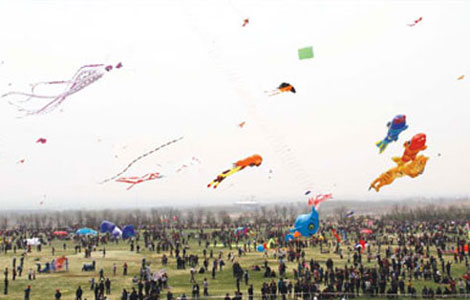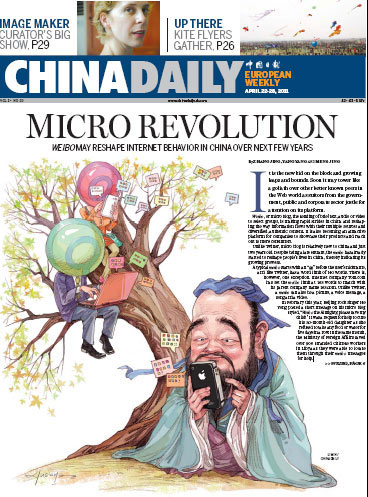Society
French curator helps organize major photo fest
Updated: 2011-04-26 07:57
By Patrick Whiteley (China Daily)
Over the past month, Berenice Angremy has been busier than a Beijing bricklayer putting the finishing touches to one of China's biggest international photography festivals. Caochangdi PhotoSpring 2011 involves 20 galleries and more than 200 artists from around the world. The exhibits, public discussions and symposiums are bringing in curators and critics from 100 countries to discuss photography.
Last year, Angremy, with another Chinese art company, established an international partnership with the Arles Photography Festival - a well-known French event - to stage a similar show in China.
It was first time in 40 years that the French organizers allowed their prestigious exhibition to be displayed outside their country.
PhotoSpring, the Chinese version of the event, bloomed in Beijing in 2010 and the second edition opened on April 23. It promises to be bigger and better than before.
Angremy said photography is already a powerful medium in China but artists lacked a platform to engage with their peers.
|
Berenice Angremy and friends helped save Beijing's famous 798 Art Zone from demolition. Provided to China Daily |
"Photography is big in China but until now there was no festival in Beijing and that was quite a pity," she said. "We wanted a festival to let China's young photographers display their best work to an international audience."
One of the special exhibitions on show will be a collection of pictures taken by Chinese photographers that were shown at the Arles festival in France in 1988. It was one of the first times Chinese photographers had shown their work in France.
Away from organizing festivals and major art exhibitions, Angremy sometimes dreams of being transported back in time and living the life of a painter in ancient China.
"You would be living in such a natural environment, reading the poems and drinking wine with friends and looking at the moon," she sighed. "It was such an idealistic life."
Ever since she was an art history college student taking Chinese lessons in Paris, Chinese art has been a passion. It led her to Taiwan, where she did her PhD in ancient Chinese painting.
Instead of an academic career in Europe, Angremy leapt back into the exciting Chinese art world of the 21st century, moving to Beijing and setting up an art consultancy in what would soon become one of the nation's hottest art districts.
In 2003, she established Thinking Hands, which organizes cultural events and makes contact between Chinese artists and foreign partners.
But at this time, her new office location at Dashanzi, or the 798 Art Zone, was set to be demolished. To fight off the bulldozers, Angremy and friends decided to hold an international festival to highlight the area's potential.
The festival was a success, and 798 was saved just as China's contemporary art scene was experiencing unprecedented growth.
In 2004, Sotherby's reported contemporary Chinese art sales of $3 million. In 2007, more than $194 million in Chinese art was sold by Sotherby's.
But during the 2009 economic crisis, the art bubble burst, and the industry underwent a correction, that Angremy says, it had to have.
Over the past two years, 798 became a popular Beijing tourist destination, with more cafes, bars, restaurants and souvenir shops opening. The eateries are often more profitable than the art galleries.
Some artists are critical of the transformation, saying the focus has moved away from the art.
"We didn't expect this but in a way it was inevitable, it just transformed by itself, and why not? It's not so bad," she said. "This whole district was going to be demolished and now it has developed into a great art scene."
Over-commercialization, and the appearance of low-level galleries is not a major worry, said Angremy.
"This generation is so money-focused it's not about contemporary art, it's all about doing business," she said. "The art scene has matured. Here, people are willing to take risks, and are not so conservative as in Europe."
This article was first printed in China Daily European Weekly. For more information, visit europe.chinadaily.com.cn.
E-paper

Blowing in the wind
High-Flyers from around the world recently traveled to home of the kite for a very special event.
Image maker
Changing fortunes
Two motherlands
Specials

Models gear up car sales
Beauty helps steer buyers as market accelerates.

Urban breathing space
City park at heart of Changchun positions itself as top tourism attraction

On a roll
Auto hub Changchun also sets its sight on taking lead in railway sector

